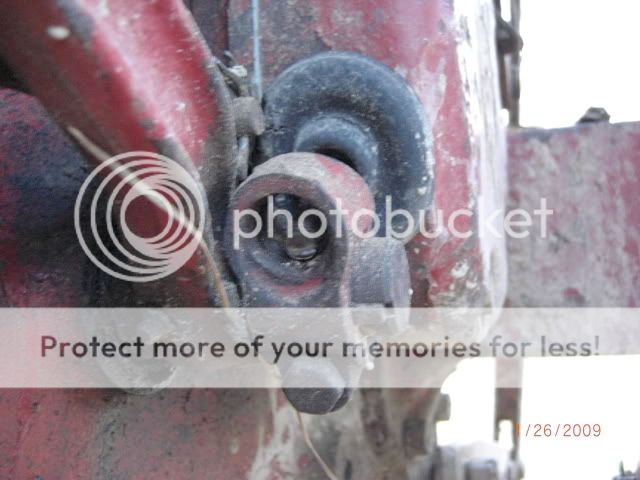charles todd
Well-known Member
I have had no problems prior with my brakes, both work... Worked until this happened. I stepped down on the LH brake to "park" and I heard a "POP". The actuator rod end with the ball attached shot out from under the tractor. Pictures below.



Has anyone had this happen before? I have not tore into it yet to see if the actuator hung up. The brake is not dragging. It looks like the rod had been cracked for a while and finally failed. Is it possible to buy just the actuating rod only or just the entire 368293R91 assembly.
I will know more once I tear it down and examine. Do these actuators become worn to the point that they need replaced? Or could this just be a result of the rod being stressed and cracked years ago and just failed. [b:237840f6f3]I strongly think I only need the threaded rod that connects to the actuator, I have the nut and pivot ball.[/b:237840f6f3]
[b:237840f6f3]I strongly think I only need the threaded rod that connects to the actuator, I have the nut and pivot ball.[/b:237840f6f3]
I am trying to save steps here. Not that I am lazy, but I know there are guys with parts, parts tractors, and tractor parts stores that frequent the board. Maybe someone has a rod or actuator for sale or trade.
Thanks,
Charles



Has anyone had this happen before? I have not tore into it yet to see if the actuator hung up. The brake is not dragging. It looks like the rod had been cracked for a while and finally failed. Is it possible to buy just the actuating rod only or just the entire 368293R91 assembly.
I will know more once I tear it down and examine. Do these actuators become worn to the point that they need replaced? Or could this just be a result of the rod being stressed and cracked years ago and just failed.
I am trying to save steps here. Not that I am lazy, but I know there are guys with parts, parts tractors, and tractor parts stores that frequent the board. Maybe someone has a rod or actuator for sale or trade.
Thanks,
Charles

